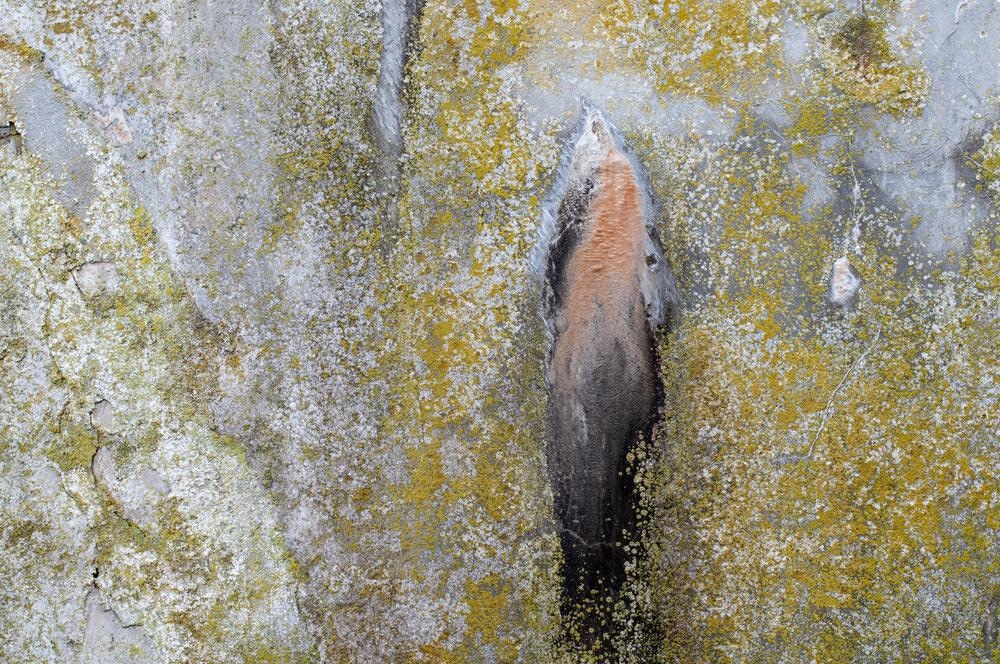Cement-based materials can undergo a deterioration process known as sulfate attack, which poses a serious problem in many countries. Understanding how sulfate ions contribute to such deterioration can help assess the potential for further damage and take necessary remedial measures to protect buildings.

Image Credit: Carmen Hauser/Shutterstock.com
Sulfate attack is the reaction between sulfate ions (SO42-) and compounds in the cement paste that result in the formation of new products with a larger molar volume. Such volume increase causes swelling of the structures affected, eventually leading to cracks formation.
Sulfate ions are highly soluble in water, and their amount in the material is crucial in determining the potential for sulfate attack on concrete. Possible sources may either be the concrete itself – since some cement can inherently have a high sulfate content – or external sources, typically when the environment (mainly in groundwater) is rich in sulfates.
Different Forms of Sulfate Attack
The two main types of sulfate attack are the one derived from ettringite formation, and the thaumasite form of sulfate attack, with the former being the most common type.
In the first case, sulfates and water react with the tricalcium aluminate found in cement to form ettringite, a calcium sulfoaluminate hydrate Ca6Al2(OH)12(SO4)3.26H2O. This can arise in wet conditions when the concrete contains a considerable concentration of water-soluble sulfates and calcium aluminate hydrates.
Ettringite grows as needle-shaped crystals, and its formation initially increases the strength and density of the concrete in the first stages. However, further ettringite formation induces cement expansion that generates high internal stress and cracking.
The second form of sulfate attack derives from the formation of thaumasite, a calcium silicate carbonate sulfate hydrate, Ca3Si(OH)6(CO3)(SO4).12H2O. Thaumasite is formed when there is a significant concentration of water-soluble sulfates, concrete contains calcium silicate hydrates, and there is a carbonate source, generally from a limestone aggregate.
Thaumasite formation also requires low temperatures (< 15°C) and persistent wet conditions – it is, in fact, generally caused by groundwater with a high content of sulfate ions. Thaumasite sulfate attack causes expansion and weakens the concrete, and in more advanced cases, the cement matrix can become a mushy mass. It is a phenomenon that is raising concerns in several countries, including France, Germany, Norway, Italy, the USA, and the UK.

Image Credit: Hunter Bliss Images/Shutterstock.com
How to Analyze Affected Structures – From Diagnosis to In Situ Monitoring
The first step in diagnosing the structures affected by sulfate attack consists of a visual inspection conducted using a hand lens or a microscope since the cracking pattern, and the presence of a white precipitate (ettringite or thaumasite crystals), can indicate the cause of deterioration.
However, this is only a preliminary inspection, and further analyses are needed to identify the type of sulfate attack, assess further damage, and, if necessary, adopt countermeasures.
Different techniques can be used to discriminate ettringite versus thaumasite, which can be easily confused. In particular, X-ray diffraction (XRD) spectroscopy, energy dispersive X-ray (EDX), and Scanning Electron Microscopy (SEM) analysis can be used for the positive identification of thaumasite.
XRD can reveal the distinctive thaumasite pattern of peaks (2θ) at 16°, 23.5°, and 28°. Conversely, if sulfate attacks were caused by ettringite, characteristic peaks at 15.8°, 18.9°, and 22.9° would be observed. The EDX-SEM investigation of needle-shaped crystals can confirm the presence of Ca, Si, and O, indicative of the presence of thaumasite.
There is a lot of interest in the possibility of monitoring the deterioration of concrete. A technique that has been recently proposed for the visual tracking of the internal damage process of sulfate attack in concrete is X-ray computed tomography (X-ray CT). X-ray CT is non-destructive and allows the in situ monitoring of the internal structure of concrete.
The technique was tested on cement paste containing different water-to-cement ratios (0.55 and 0.40) exposed to a sodium sulfate (NaSO4) solution over twelve months. X-ray CT analysis was able to track the time-dependent development of degradation, and it also allowed to determine the relationship between crack volume fraction and erosion time.
The extent of sulfate attack can also be assessed with smart aggregates (SA), particularly with piezoelectric transducers implanted in the cement matrix. SA consists of sensors directly embedded in the material under investigation, and over the last years, they have been extensively involved in the structural health monitoring of buildings.
SA actuators are used to produce vibration signals that propagate in the concrete. Subsequently, SA sensors in the propagation paths detect the vibration signals and convert them into voltage signals. Wave velocity is a good index to reflect the material conditions since it highly depends on the material's elastic modulus. Therefore, the data can be used in the assessment of sulfate attacks.
As technology progresses, new methods, especially concerning in situ health monitoring, become available. Understanding how sulfates can affect the properties of concrete is important since it informs possible procedures for investigating and assessing the impact on buildings and advising potential remedial measures.
Sources:
- Longworth, I. 2008. Sulfate damage to concrete floors on sulfate-bearing hardcore. In: GOVERNMENT, D. F. C. A. L. (ed.). London: RIBA Publishing.
- Skaropoulou, A., Kakali, G. & Tsivilis, S. (2006). A study on thaumasite form of sulfate attack (TSA) using XRD, TG and SEM. Journal of Thermal Analysis and Calorimetry, 84, 135-139.10.1007/s10973-005-7198-2
- Yang, Y., Zhang, Y., She, W., Wu, Z., Liu, Z. & Ding, Y. (2018). Non-destructive monitoring the deterioration process of cement paste exposed to sodium sulfate solution by X-ray computed tomography. Construction and Building Materials, 186, 182-190.10.1016/j.conbuildmat.2018.07.145
- Zou, D., Cheng, H., Liu, T., Qin, S. & Yi, T.-H. (2019). Monitoring of concrete structure damage caused by sulfate attack with the use of embedded piezoelectric transducers. Smart Materials and Structures, 28, 105039.10.1088/1361-665X/ab3902
Further Reading
Last Updated: May 17, 2022